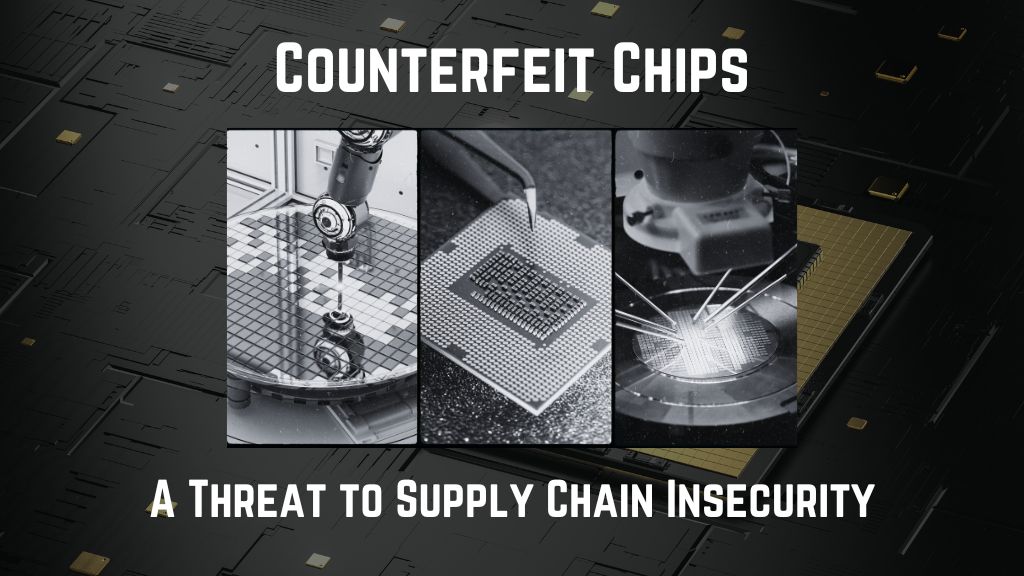Counterfeit Chips: A Threat to Supply Chain Insecurity

In the intricate web of global supply chains, the advent of counterfeit chips has emerged as a menacing shadow. These deceptive components infiltrate the very heart of technology, jeopardizing the integrity of products and the security of industries and nations. This article delves deep into the realm of counterfeit chips, shedding light on their origins, the risks they pose, and the strategies required to safeguard supply chains against this pervasive threat.
Table of Contents
- Understanding Counterfeit Chips
1.1 What Are Counterfeit Chips?
1.2 The Origins of Counterfeit Chips- The Supply Chain Vulnerability
2.1 The Fragile Thread of Supply Chains
2.2 The Impact of Counterfeit Chips on Supply Chains- Counterfeit Chips in Real-World Scenarios
3.1 Case Studies: When Counterfeit Chips Strike
3.2 The Widespread Implications- Detecting Counterfeit Chips
4.1 Advanced Authentication Techniques
4.2 The Role of Technology in Verification- Preventing Counterfeit Chips in the Supply Chain
5.1 Strengthening the Chain: Supplier and Sourcing Practices
5.2 Regulatory Frameworks and Compliance- Mitigating the Risks and Ensuring Resilience
6.1 A Holistic Approach to Supply Chain Security
6.2 The Future of Supply Chain Integrity- Conclusion
1. Understanding Counterfeit Chips
1.1 What Are Counterfeit Chips?
Counterfeit chips are unauthorized or fraudulent copies of electronic components, typically integrated circuits or ICs. They are designed to mimic genuine components in appearance and functionality but are often of inferior quality, posing significant risks to the systems they infiltrate.
1.2 The Origins of Counterfeit Chips
The origins of counterfeit chips are rooted in a complex web of illicit activities. These include recycling discarded electronic waste, cloning genuine components, and infiltrating the supply chain with counterfeit products. Understanding these origins is essential in combating this pervasive threat.
2. The Supply Chain Vulnerability
2.1 The Fragile Thread of Supply Chains
Modern supply chains are intricate networks that span the globe, comprising multiple entities, including manufacturers, distributors, and suppliers. This complexity makes them susceptible to infiltration by counterfeit chips at various touchpoints.
2.2 The Impact of Counterfeit Chips on Supply Chains
Counterfeit chips introduce vulnerabilities that can disrupt the smooth flow of products, erode trust between stakeholders, and inflict significant financial losses. Supply chains face the risk of tainted components infiltrating critical systems, leading to malfunctions and security breaches.
3. Counterfeit Chips in Real-World Scenarios
3.1 Case Studies: When Counterfeit Chips Strike
Examining real-world cases of counterfeit chip incidents provides valuable insights into the multifaceted consequences of these deceptive components. From military equipment to consumer electronics, various industries have been impacted by counterfeit chips.
3.2 The Widespread Implications
Counterfeit chips extend their reach far beyond the physical components they replace. They compromise system performance, jeopardize data security, and erode trust in technology. The ripple effects of counterfeit chips can have long-lasting and costly repercussions for organizations and industries.
4. Detecting Counterfeit Chips
4.1 Advanced Authentication Techniques
Authentication techniques have evolved significantly to combat counterfeit chips. Manufacturers are implementing advanced security measures, including microprinting, holograms, and unique identifiers, to verify the authenticity of electronic components. These techniques add layers of protection against counterfeiters’ attempts to mimic genuine products.
4.2 The Role of Technology in Verification
Technology plays a pivotal role in detecting counterfeit chips within supply chains. Artificial intelligence (AI) and machine learning algorithms are employed to analyze vast amounts of supply chain data. These advanced technologies can identify anomalies and patterns associated with counterfeit components, flagging potential threats before they infiltrate the supply chain.
5. Preventing Counterfeit Chips in the Supply Chain
5.1 Strengthening the Chain: Supplier and Sourcing Practices
To strengthen supply chains, organizations must begin with robust supplier due diligence. Establishing trust in the sources of electronic components is essential for mitigating the risks posed by counterfeit chips. Transparency and traceability in the sourcing process help organizations track components from their origin to the final product, minimizing the opportunities for counterfeit chips to enter the supply chain undetected.
5.2 Regulatory Frameworks and Compliance
Global regulatory bodies and industry organizations have recognized the growing threat of counterfeit chips. They have developed standards and regulations to address this issue. Compliance with these frameworks is crucial for ensuring the integrity of supply chains. Organizations must stay informed about evolving regulations and adapt their practices to meet compliance requirements.
6. Mitigating the Risks and Ensuring Resilience
6.1 A Holistic Approach to Supply Chain Security
Combatting the threat of counterfeit chips requires a comprehensive, integrated approach to supply chain security. This approach encompasses technology, processes, people, and partnerships. Organizations must prioritize security at every stage of the supply chain, from design and manufacturing to distribution and end-user support.
6.2 The Future of Supply Chain Integrity
As technology continues to evolve, so do the tactics employed by counterfeiters. To stay ahead of the curve, organizations must embrace emerging technologies, collaborate across industries, and adapt their strategies to ensure the resilience of their supply chains. The future of supply chain integrity relies on innovation, vigilance, and a commitment to safeguarding against the shadowy menace of counterfeit chips.
Conclusion
Counterfeit chips represent a clear and present danger to supply chain security and, by extension, the reliability and integrity of the technology we depend on daily. Protecting against this pervasive threat demands vigilance, innovation, and collaboration across industries. By understanding the origins, risks, and detection methods of counterfeit chips and by implementing robust prevention measures, organizations can fortify their supply chains against this shadowy menace and secure the future of technology.
Discover Vyrian – Your Premier Electronic Parts Distributor. We provide top-quality components, sourcing solutions, and unparalleled expertise. Empower your innovations with Vyrian today!
